Exhilarating sailing adventure along Atlantic France, taking you around Brittany, the Bay of Biscay, and the Channel Islands. This trip offers diverse experiences, from exploring the dramatic Atlantic coast and making offshore passages to visiting historic ports such as Saint-Malo and Douarnenez. This voyage offers an outstanding training experience in tidal waters.
Highlights
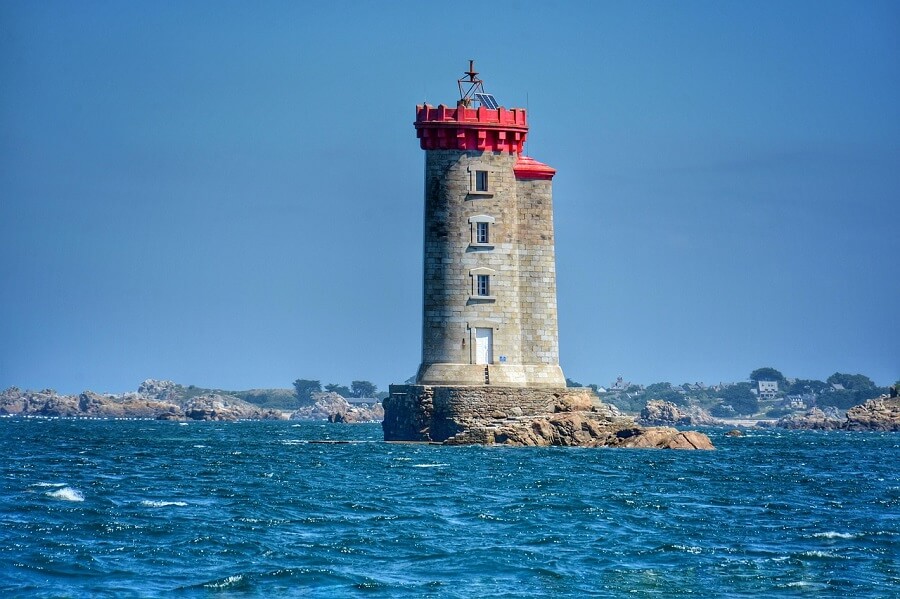
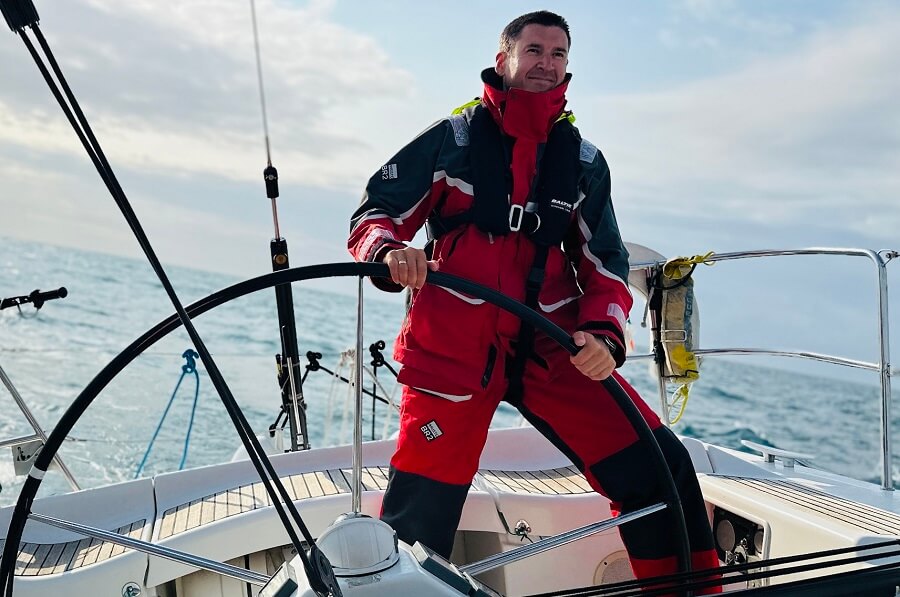
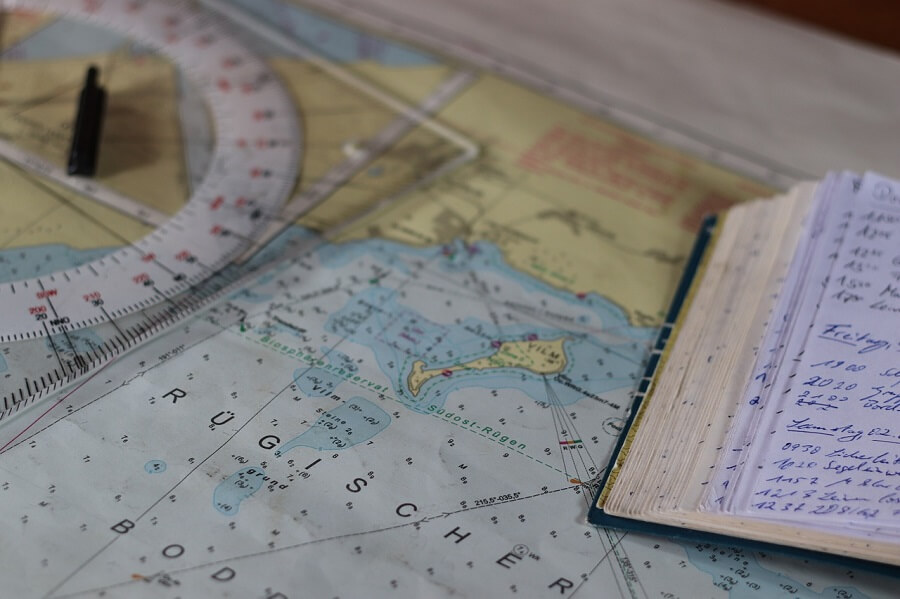
Dates
- Start: 18 May 2026 (Saturday, 13:00) at Port Crouesty (Bay of Biscay), France.
- Finish: 25 May 2026 (Monday, 09:00) at Saint-Malo, France.
The start and end dates are fixed.
Contribution
The whole trip (8 days) per person:
- 1040 Euro for a bunk. The deposit (50% of the balance) is to be paid within one week of booking, the rest 35 days before the start date.
- 160 Euro for consumables. Kitty is collected during the joining day for all food consumed onboard, harbour fees and diesel. This is a realistic estimation. Any remainder will be refunded at the end of the trip.
The trip is non-commercial and runs in a friends-sailing manner. The contribution per person is fixed no matter how many people have booked the trip. The trip will run regardless of the number of participants.
What is not included:
- Optional expenses like rental vehicles or food & beverages consumed ashore
- Travel to and from the boat
- Personal travel insurance (recommended) - you can find some recommendations in the FAQ
- Personal laundry (some ports have facilities to do laundry if you need it)
How much to bring in addition?
Generally, you won’t need anything in addition, but this will depend on how much you want to eat in restaurants and spend on other things like souvenirs and tourist attractions. Some people prefer to eat only on the boat and don’t spend anything on restaurants and some prefer to eat outside whenever we are on land. This is very individual.
Who can join
It is recommended to have at least 1 week of sea sailing experience to join this trip.
You will become an active member of the crew. You will not be just a passenger or a guest. During the voyage you will assist with helming, sail trimming, cooking and all the normal duties of a crew member whilst having the opportunity to learn about weather, passage planning, navigation, boat handling and many more according to your interests and experience. Above all, it should be fun and recreational for everyone.
In the course of the trip we will maintain a watch system and we will sail during the night. Therefore, there is no fixed lights-off time and your sleeping rhythm will be different than at home.
Our main language on board is English. If English is not your native language, and you don’t know the English sailing terms, don’t worry. You will learn the necessary vocabulary in no time while on board.
There will be up to seven people on board, including the skipper, allowing us to run a three-watch system with two crew members per watch.
Travel logistics
How to get to Saint-Malo
By Train: take a TGV from Paris Montparnasse (about 2.5–3 hours).
By Air, the nearest airport is Rennes Airport (RNS) – about 1 hour by train.
Let us know, we can help you find the best connections!
How to travel from Port Crouesty
By Train: take a TGV to Paris Montparnasse from Vannes (about 2.5–3 hours).
By Air, the nearest airports:
- Nantes Atlantique (NTE) - 1.5h by train from Vannes
- Rennes (RNS) - 1h by train from Vannes
From Port du Crouesty, take a bus (ligne 24 or regional shuttle) or taxi to Vannes — about 40–50 minutes.
Let us know, we can help you find the best connections!
Skipper
Marcin Wojtyczka: RYA Yachtmaster Ocean commercially endorsed, RYA Yachtmaster Cruising Instructor, MCA Master 200 GT Unlimited (Code Vessels less than 200GT / OOW Yachts less than 500GT)
What should you pack
You can download a complete checklist here.
The most important items:
- head torch for night sailing
- boat shoes with a good grip that don’t leave marks on the deck
- foul weather gear (if you have one), otherwise waterproof jacket
- some warmer clothes
- passport
- insurance policy
- payment/credit cards
- phone with charger
- toiletries
There will automatic life jackets, bedlinen (pillows, blankets/duvet) and towels on board for everyone. You may want to take sleeping bag for additional comfort.
The trip will be focused on training and cruising in tidal waters. In total, we should log up to 350 nautical miles and 70h. We'll aim to make as many harbour entries and exits as possible to sharpen navigation and boat-handling skills.
Anticipated route:
Saint-Malo - Binic - Paimpol - L'Aber-Wrac'h - Ouessant Island - Douarnenez - Ile de Groix Island - Ile Houat Island - Port du Crouesty
We will try to follow the planned route, but the final itinerary will be decided in association with you, and the crew, in light of the weather, boat and crew conditions at the time. Therefore, the amount of ports we visit, and the amount of nautical miles or hours sailed may differ from what is stated in the description.
We will be maintaining a watch system to ensure everyone is well rested and meals are prepared on time and maintenance is undertaken when necessary. There will be 3 watches with up to 2 people in each watch.
Hanse 458 "Hydra", 2023
The boat is designed for fast cruising. It delivers effortless sailing, responding smoothly to the helm and remaining balanced even in challenging conditions. She is well equipped and prepared for offshore sailing.
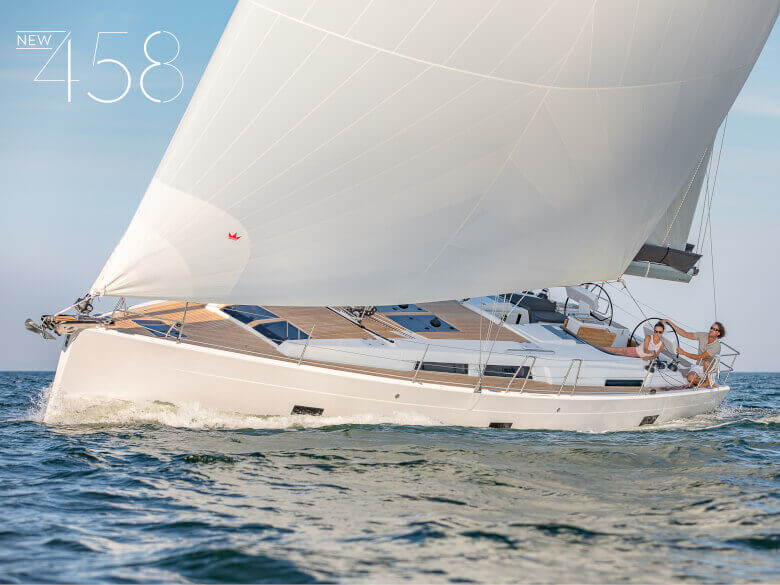



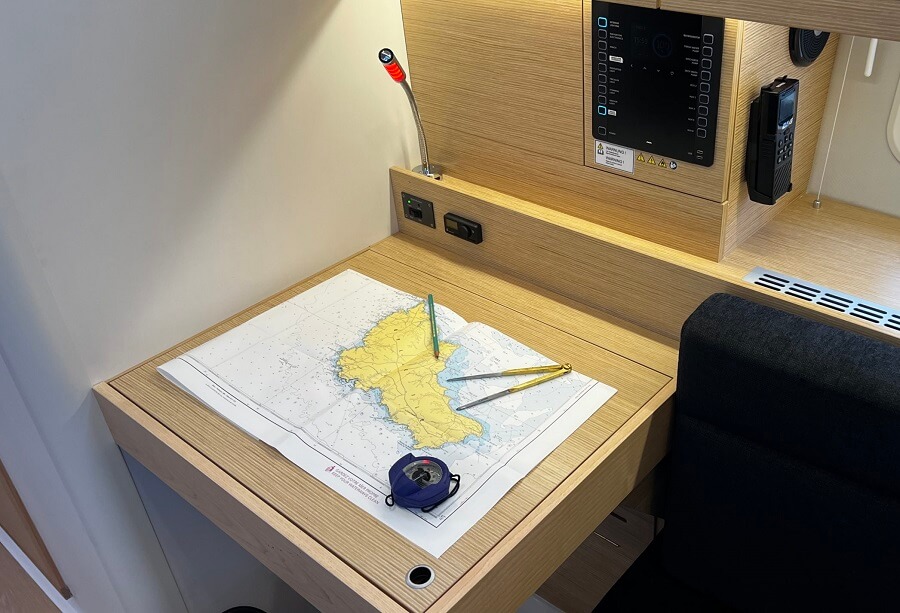
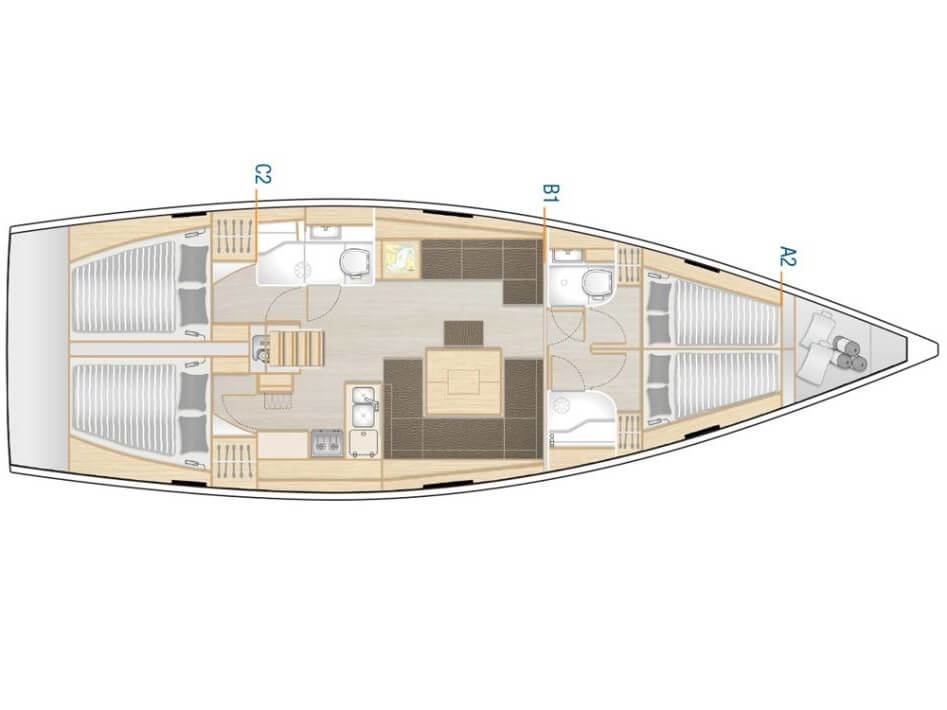
We will inspect the boat thoroughly before the voyage to ensure that every bit of equipment is absolutely ship-shaped.
General info:
- Year: 2023
- Type: sailing
- Hull: monohull
- Length (LOA): 14.04 m (46.06 ft)
- Waterline length (LWL): 12.20 m
- Hull speed: 8.48kt
- Berths (Bunks): 8+2
- Cabins: 4
- WC / Shower: 3
- Beam: 4.38 m (14 ft)
- Draught: 1.82 m (6 ft)
- Air draft: 20.6 m
- Engine: 57 HP
- Fuel capacity: 210 L (Diesel)
- Water capacity: 450 L
- Displacement: 11.7 t
- Single spade rudder
- 2 steering wheels
- Sails: Fully battened Mainsail 59.00 m2, Furling genoa 44.00 m2, Storm Jib 9.00 m2, Gennaker 140 m2
- Plastimo drogue
Equipment:
- Autopilot
- Swimming platform
- Refrigerator
- Stove
- Heater
- Sprayhood
- Radio/CD/MP3
- Socket 12V
- DSC VHF radio
- Handheld VHF DSC radio
- EPIRB
- AIS
- Radar reflector
- Chart plotter with GPS and digital chartography charts
- Sextant Astra IIIB Deluxe
- PredictWind Offshore app
- Complete set of pilot books, tidal stream atlases, tide tables, almanacs and paper charts
- Pillows, bedlinen and towels for each crew member
Average weather conditions:
Air and Sea temperature
In May, weather conditions in the Bay of Biscay and Brittany are generally favorable for sailing, with mild temperatures and moderate winds. The area remains influenced by North Atlantic low-pressure systems, while the winter storms have passed, occasional depressions can still bring unsettled weather. Average daytime temperatures are around 16 °C, dropping to about 10 °C at night.
Wind and sea state
The average wind speed in Brittany in May is 5 Bft. The area remains influenced by North Atlantic low-pressure systems, while the winter storms have passed, occasional depressions can still bring unsettled weather. The majority of the trip will be on the exposed North Atlantic coast of West France where moderate to rough sea state is to be expected.
The route is divided into several coastal and offshore passages with some night sailing. You will receive a certificate of passage to prove your sea time for sailing licenses. You will be an active member of the crew, and we will provide practical training on board to ensure safety and improve your sailing skills.
We give a great amount of responsibility to each crew member in running the ship so that you can gain a good experience and learn new skills as much or as little as you want. The skipper is an RYA instructor and will find it difficult not to teach or coach anyone who shows the slightest bit of interest.
RYA qualifying passages
If you are an aspiring Skipper or Yachtmaster, it will be an excellent opportunity to gain bluewater miles, practice navigation, pilotage and COLREG skills so that you can be more confident and comfortable when taking a boat out to sea on your own. During the voyage, we can evaulate your current knowledge and provide suggestions for improvement. We can evaluate whether you are at the right level to pass an RYA exam and practice any gaps in your knowledge.
The opportunity will also be there to act as a skipper (with guidance if needed from the skipper) for your RYA Yachtmaster Coastal or RYA Yachtmaster Offshore qualifying 60M passages.
Main topics that you can learn or brush up:
- Maneuvering under sails & engine: berthing, hoisting and lowering sails, reefing, tacking, gybing, sail trim
- Safety: use of liferaft, lifejacket, EPIRB, PLB, AIS beacons, managing emergencies
- Equipment: use of Autopilot and VHF
- Weather forecasts and weather routing
- Offshore & coastal navigation: digital and traditional (including the use of Sextant if of interest)
- Tides and Tidal Streams
- Night navigation
- Pilotage and passage planning
- ColRegs
- Storm tactics and use of a drogue
- Use of Storm Jib
- Life on board: organization of watches, nutrition, sleep and risk management
We will try to follow the anticipated route, but on the sea, we need to remain flexible as we cannot plan and anticipate everything. Therefore, your expectation might be different than what you experience, subject to weather, boat and crew conditions and what the majority of the crew wants.
Joining day - Saint-Malo
We will spend the first day preparing and victualling the yacht, going over the safety routines and practices, getting up to speed with the boat and learning or refreshing all the basic sailing skills before we embark on the journey. Once we slip the lines there will be plenty of occasions to practice tacking, gybing, reefing, boat handling under the engine and all the other key skills we must have.

Saint-Malo
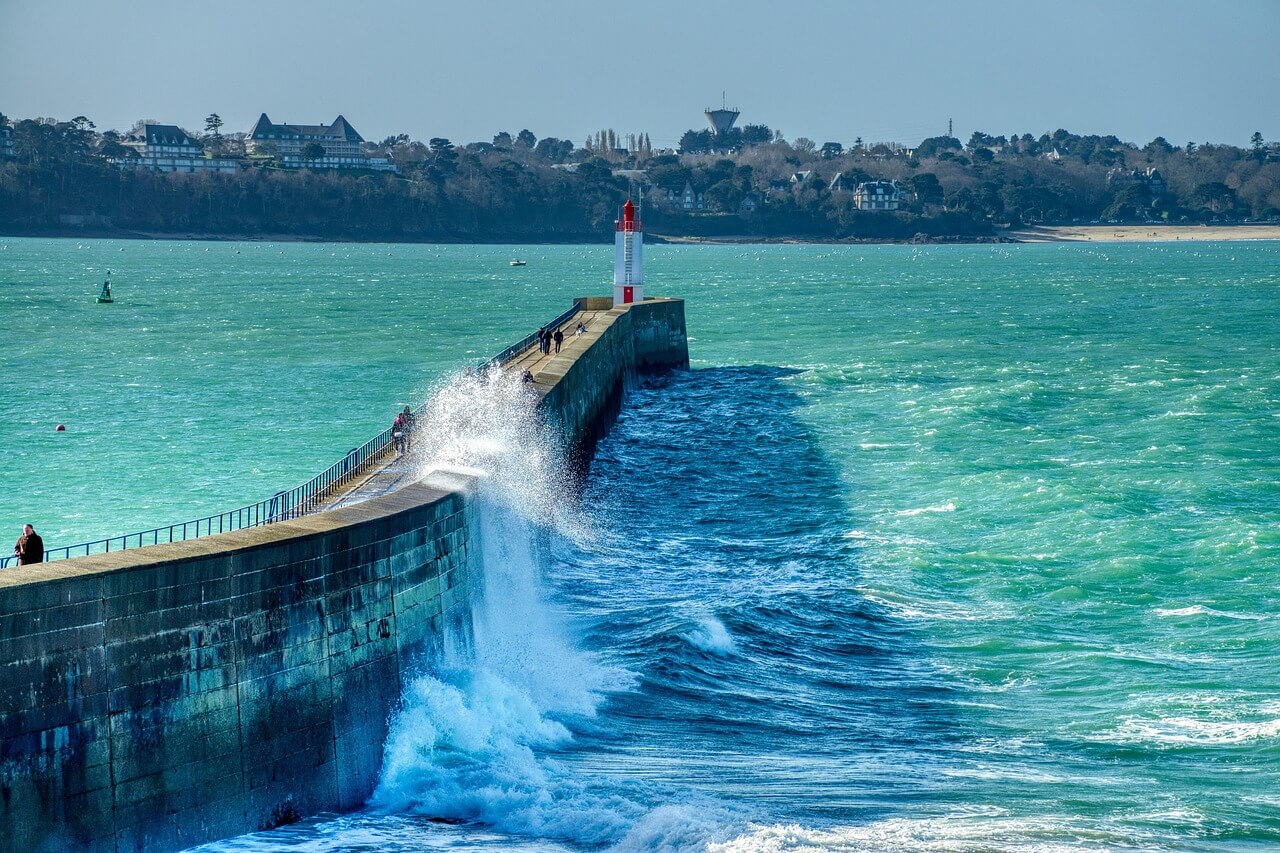
Saint-Malo
Saint-Malo is of Brittany's most iconic historic ports known for its granite ramparts, privateer history and a dramatic tidal harbour. Its old town (Intra-Muros) is filled with narrow streets, seafood restaurants, and lively squares that showcase the city's maritime heritage. Key attractions include the city ramparts, Fort National, and the nearby Grand Bé island, accessible on foot at low tide.
Binic (36 NM)
Binic is known for its lively marina, and relaxed holiday atmosphere. Its waterfront is lined with cafés, creperies, and small shops, making it an easy place to stroll and enjoy the sea views.
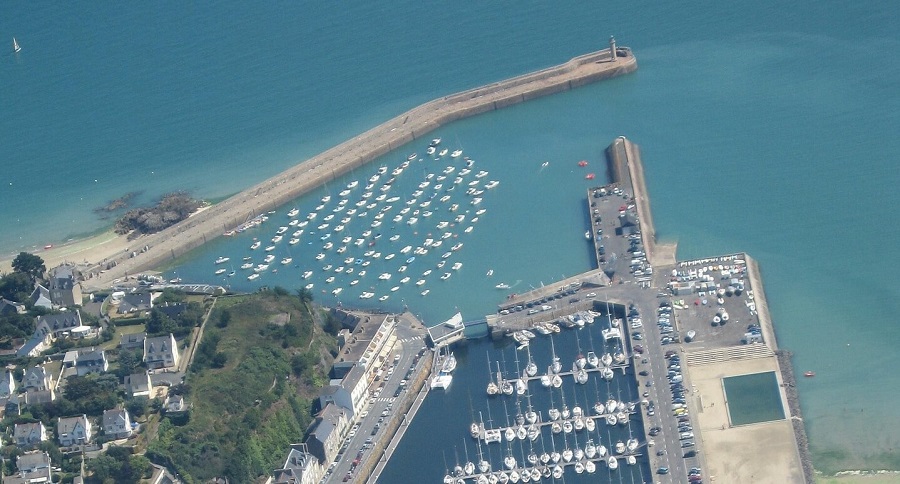
Binic
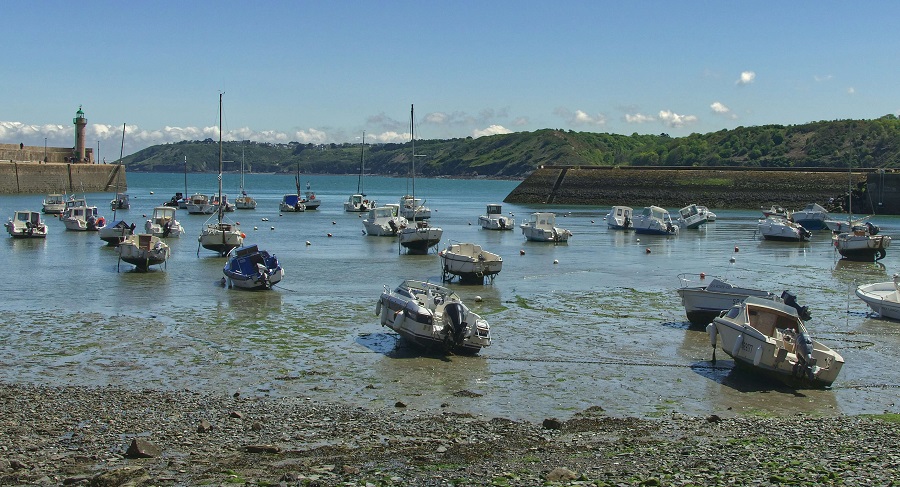
Binic
Key attractions include Plage de la Banche, the Binic marina, and coastal paths that lead to quiet coves and scenic viewpoints along the bay.
Paimpol and Ile De Brehat Island (26 NM)
Paimpol is a charming harbour town once famous for its Icelandic cod fishing fleet.Its old town is filled with narrow streets, stone houses, and cozy cafés, making it a pleasant place to wander between tides.
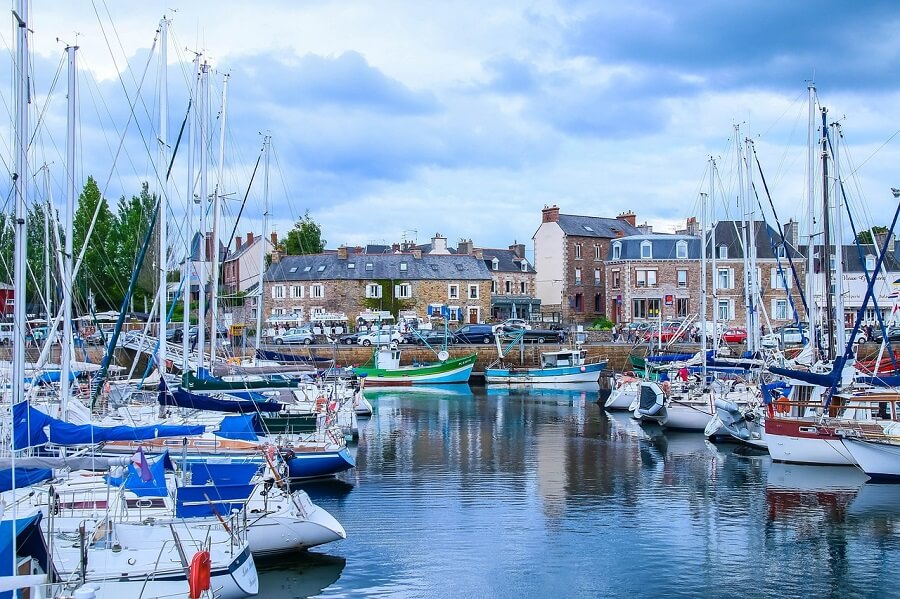
Paimpol
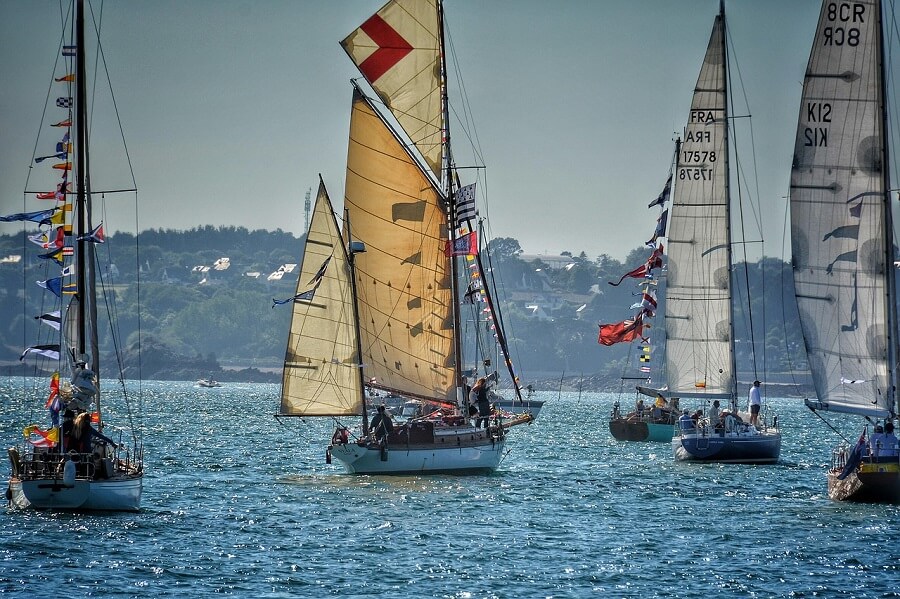
Paimpol Bay
Key attractions include the Paimpol harbour and the nearby Abbaye de Beauport, and ferry access to Île de Bréhat, one of Brittany's most beautiful islands.
L'Aber-Wrac'h (84 NM)
Historically used by smugglers and sheltered fishing fleets. This is one of Brittany's classic "abers" - long, a deep, steep-banked estuary. For sailors, it's a place wrapped in mystery, dramatic landscapes, and the raw Atlantic energy that defines the Breton coast. The area offers quiet coastal trails, with views of islands and lighthouses scattered along the coastline.
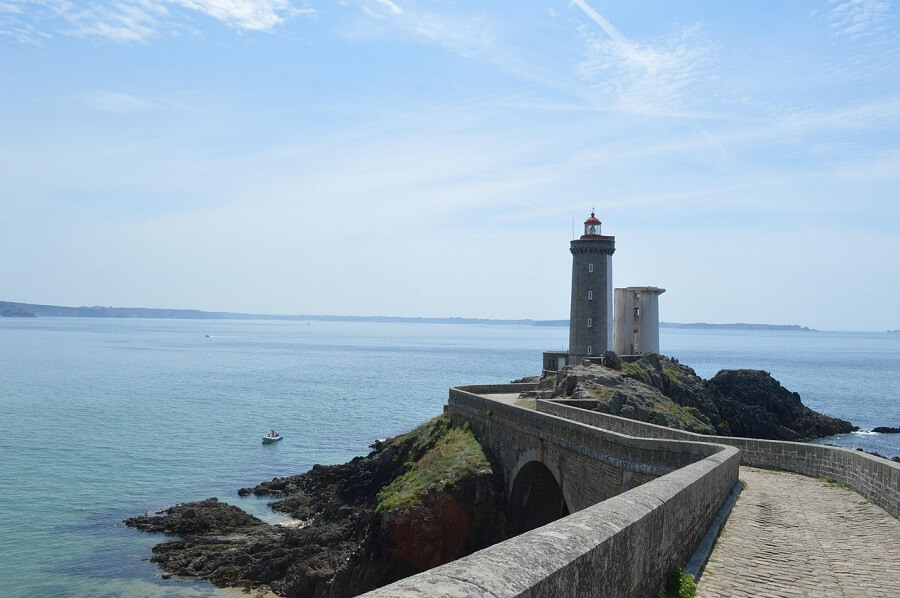
Coast near L'Aber-Wrac'h
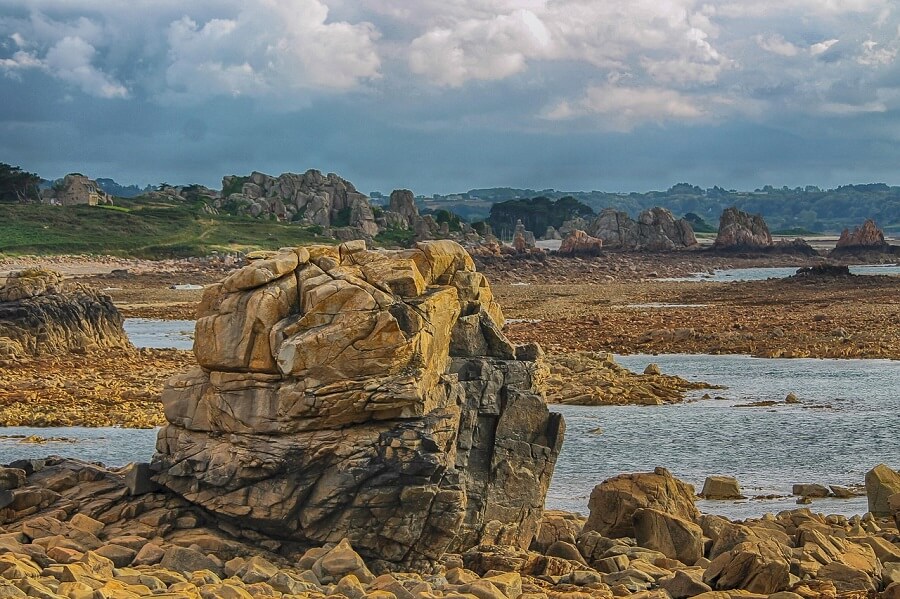
Coast near L'Aber-Wrac'h
Key attractions include the Île Vierge lighthouse, one of the tallest in Europe, the Port de l'Aber-Wrac'h marina, and stunning walks along the rugged Aber coast.
Douarnenez and Quessant Island (110 NM)
Douarnenez is a lively fishing town deeply tied to sardine fishing history. Home to Port-Musée, one of France’s most important maritime heritage museums. Its old town and waterfront are filled with cafés, markets, and seafood spots, while the Port-Musée showcases historic boats from around the world.
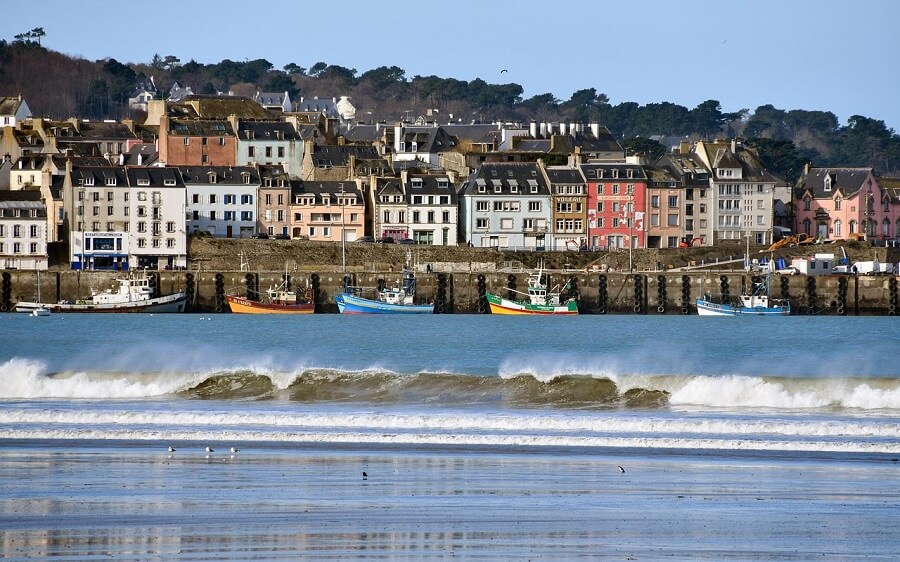
Douarnenez
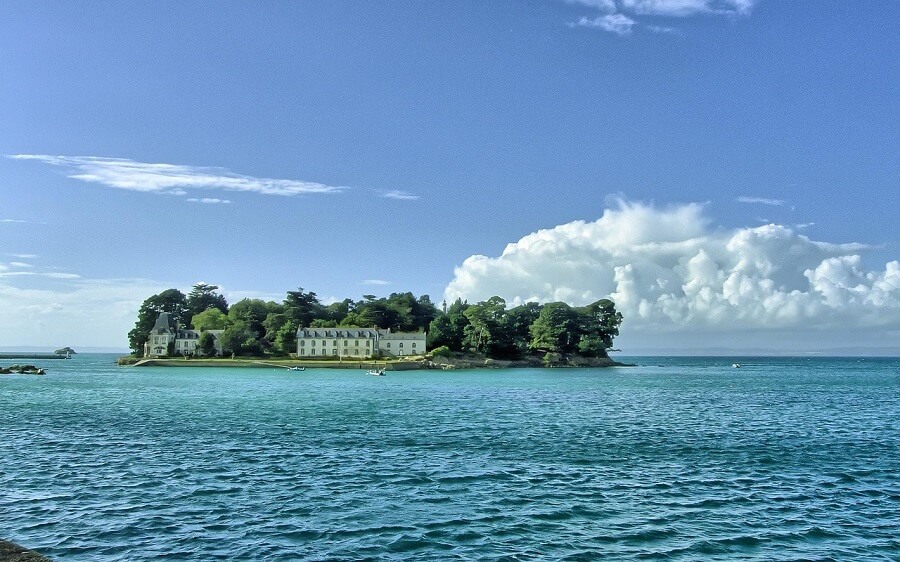
Tristan island on the approaches to Douarnenez
If the weather is settled we will try to anchor at Ouessant Island at the western edge of Brittany, famous for its dramatic cliffs and iconic lighthouses. The island is wild, with scenic cycling routes, stone-walled fields, and striking coastal views. Highlights include the Créac'h Lighthouse, the Kermorvan cliffs, and the island's unique sense of isolation at the gateway to the Atlantic.
Ile de Groix (32 NM)
Île de Groix is a small island off the coast of southern Brittany, known for its rocky cliffs, and clear turquoise waters. The island is ideal for cycling, hiking, and sailing, with charming fishing villages and colorful harbors scattered along the coast.

Ile de Groix Island
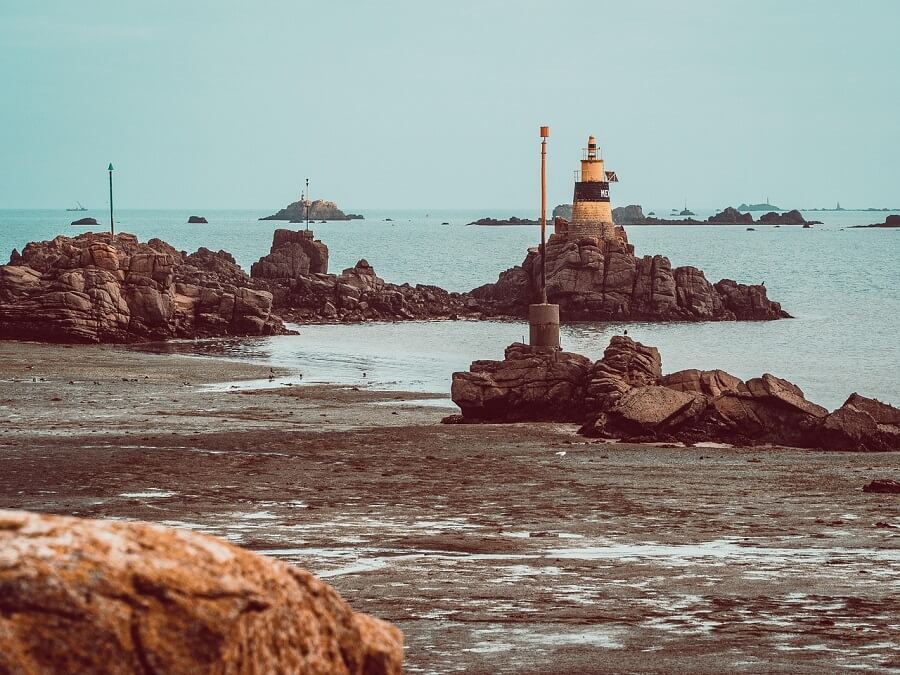
Drying heights, a common view in Brittany
Key attractions include the Île de Groix lighthouse, and scenic coastal trails that showcase the island's rugged beauty.
Ile Houat Island and Port du Crouesty (36 NM)
Port du Crouesty is a modern marina near historic sites in the Golfe du Morbihan. Although the marina itself is modern, it is surrounded by layers of Breton history, wild coastline, and legendary sailing waters. Key attractions include the bustling quai promenade and the nearby Port Navalo lighthouse.
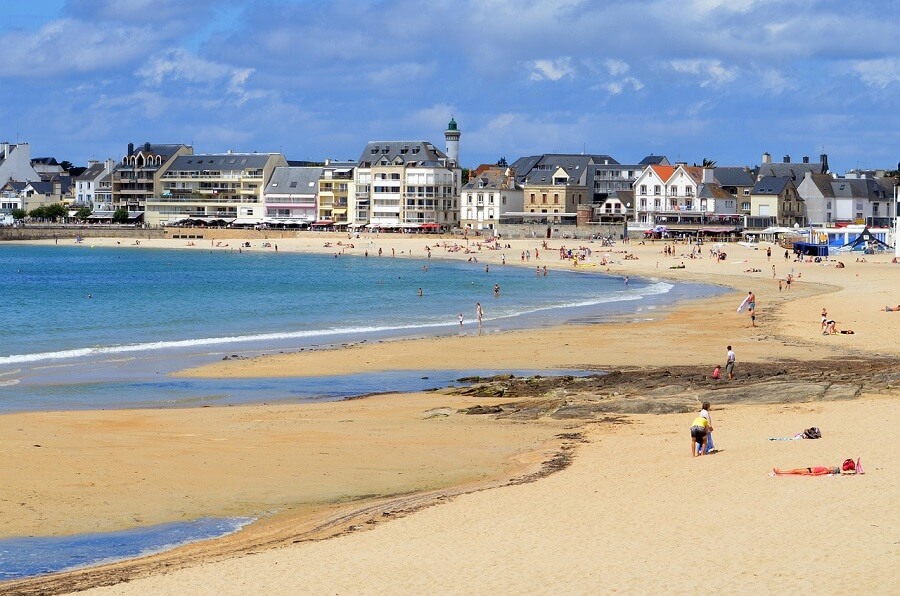
Quiberon Bay
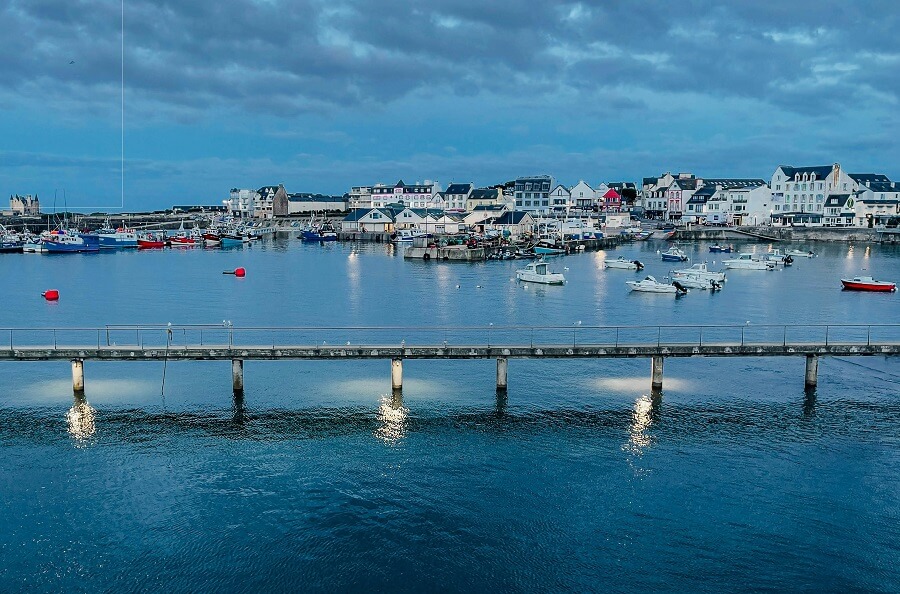
Quiberon Bay
We will finish leg 2 in Port Crouesty.
Check out the FAQ section for common questions.
Still have questions? Please don’t hesitate to contact us. We’d love to hear from you.
- Related articles:
- Routes